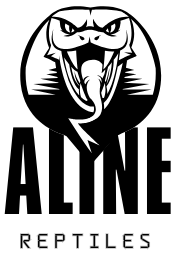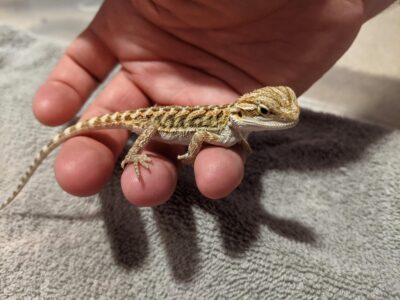Bringing home a baby bearded dragon is an exciting and rewarding experience, but it also comes with responsibilities. These tiny reptiles, known for their curious nature and expressive personalities, require the right care to thrive.
Whether you’re a first-time reptile owner or looking to expand your collection, understanding the essentials of baby bearded dragon care is crucial. From setting up the perfect habitat to ensuring a balanced diet, this guide will cover everything you need to know to raise a happy and healthy pet.
Choosing a Healthy Baby Bearded Dragon
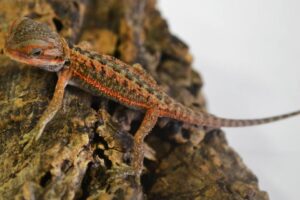
Before bringing a baby bearded dragon home, it’s important to ensure you’re selecting a healthy one. Here are some key things to look for:
- Bright, clear eyes: A healthy dragon will have alert, clear eyes without any discharge.
- Active and responsive behavior: A good sign is a baby dragon that moves around and reacts to stimuli.
- No signs of injury or disease: Check for tail kinks, missing toes, or swollen joints.
- Healthy skin and shedding patterns: Their skin should be smooth, and they shouldn’t have excessive stuck shed.
Where to buy a baby bearded dragon:
- Reputable breeders (preferred option)
- Reptile expos and shows
- Pet stores (with caution)
Setting Up the Perfect Habitat
Tank Size and Setup
- A 20-gallon tank is suitable for a baby bearded dragon, but you’ll need a 40-gallon or larger enclosure as they grow.
- Use a secure screen lid to prevent escapes and allow proper ventilation.
Lighting and Temperature
- UVB lighting is essential for calcium absorption and preventing Metabolic Bone Disease (MBD).
- A basking spot of 100-110°F (37-43°C) is necessary for digestion.
- The cool side of the tank should be 75-85°F (24-29°C).
Substrate Choices
- Best options: Paper towels, reptile carpet, or tile.
- Avoid: Sand or loose substrates to prevent impaction.
Decorations and Hides
- Provide branches and climbing structures for exercise.
- A hideout is essential for reducing stress.
- Include a shallow water dish, though misting is often preferred for hydration.
Feeding and Nutrition
What Do Baby Bearded Dragons Eat?
Baby bearded dragons have a high-protein diet, consisting mainly of live insects and a small percentage of vegetables.
Best Insects for Baby Bearded Dragons:
- Crickets (staple feeder)
- Dubia roaches (high in protein)
- Phoenix worms (high in calcium)
- Mealworms (in moderation due to hard shells)
Best Vegetables and Greens:
- Collard greens
- Mustard greens
- Dandelion greens
- Squash
- Bell peppers
Feeding Schedule
- 0-3 months: 3-5 feedings per day, with 70-80% insects and 20-30% greens.
- 3-6 months: 2-3 feedings per day, slowly increasing the percentage of greens.
Supplementation
- Calcium powder (with D3) – Dust insects 5 times per week.
- Multivitamin supplement – Use 2-3 times per week.
Hydration and Bathing
Do Baby Bearded Dragons Need a Water Bowl?
Bearded dragons don’t always drink from bowls, but it’s good to have one available. Misting their food and enclosure can also help with hydration.
Bathing Tips
- Bathe your baby dragon 2-3 times per week in shallow, lukewarm water.
- This helps with hydration and shedding.
Handling and Taming
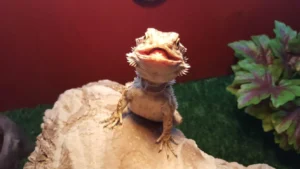
How to Handle Your Baby Bearded Dragon
- Always approach from the side to avoid startling them.
- Support their entire body, including the belly and tail.
- Start with short handling sessions (5-10 minutes) and increase as they get comfortable.
Signs of Stress
- Darkened beard
- Glass surfing (excessive pacing)
- Refusal to eat
Building trust takes time, but with patience, your dragon will recognize and respond to you positively.
Common Health Issues & Prevention
1. Metabolic Bone Disease (MBD)
- Cause: Lack of UVB lighting and insufficient calcium.
- Symptoms: Weak limbs, deformities, lethargy.
- Prevention: Provide proper UVB light and dust food with calcium.
2. Impaction
- Cause: Eating loose substrate, oversized insects.
- Symptoms: Swollen belly, lack of bowel movements.
- Prevention: Use safe substrates and feed appropriately sized insects.
3. Respiratory Infections
- Cause: Low temperatures, high humidity.
- Symptoms: Wheezing, open-mouth breathing.
- Prevention: Keep humidity below 40% and maintain proper temperature gradients.
Growth and Development Stages
| Age | Size | Feeding Frequency |
|---|---|---|
| 0-3 months | 4-9 inches | 3-5 times daily |
| 3-6 months | 9-12 inches | 2-3 times daily |
| 6-12 months | 12-18 inches | 1-2 times daily |
- Baby bearded dragons grow rapidly in the first 6 months.
- Shedding is frequent in young dragons.
Fun Facts & Behavior Insights
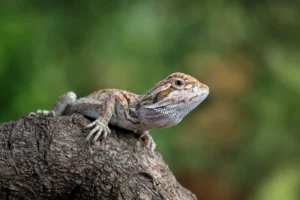
- Bearded dragons recognize their owners over time and may even show affection.
- Arm waving is a submissive gesture, often seen in babies.
- Head bobbing is a sign of dominance or excitement.
Conclusion
Raising a baby bearded dragon requires dedication, but the rewards are well worth it. By providing the right habitat, nutrition, and care, you can ensure your pet grows into a healthy, happy adult. Whether you’re a new owner or an experienced reptile enthusiast, following these guidelines will set you up for success.
